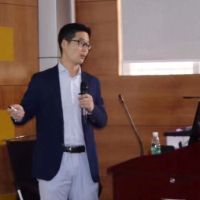Land Use Change (LUC) and Resources and Environmental Carrying Capacity (RECC) in Tropics and Sub-tropics
A special issue of Land (ISSN 2073-445X). This special issue belongs to the section "Land Planning and Landscape Architecture".
Deadline for manuscript submissions: 30 September 2024 | Viewed by 2677
Special Issue Editors
Interests: tropical plantations mapping; agro-forestry remote sensing; border geography; border land use changes and geopolinomical relations; resources and environmental carrying capacity
Interests: land use and land cover change; geography; remote sensing; resources and environmental carrying capacity
Interests: land use and land cover change; agricultural remote sensing
Interests: land cover mapping; land use change; agricultural remote sensing; agricultural land systems
Special Issues, Collections and Topics in MDPI journals
Special Issue Information
Dear Colleagues,
Land use and land cover change (LULCC) is an important field in global environmental change and critical for the modeling human–Earth systems. It affects ecosystem services, water conservation, food security, the climate system, and resources and environment carrying capacity (RECC). Currently, the (sub-) tropical region has become the a hotspot experiencing, or about to experience, LULCC due to the rapid and extensive development of society and the economy. Remote sensing techniques have been established as the most cost-efficient and reliable approaches to obtain information related to this topic. Meanwhile, RECC has become an effective and operational tool to describe development restrictions and quantify regional sustainable development. RECC research has become a frequently methodologically and theoretically debated topic in ecology, geography, and natural resources and environmental studies.
The scientific issues of LULCC and their impacts on the environment are of great significance in stabilizing and improving regional sustainable development. Such research is not only a primary route for exploring the impact of human activities on the resources and environment, but also acts as a basis and premise for optimizing and improving the management and control strategies surrounding the area.
This Special Issue aims to include studies that provide insights about the remote sensing of land cover and land use mapping and its impact and driving factors, as well as their resources and environmental carrying capacity at sub- and/or tropical scales.
In this Special Issue, original research articles and reviews are welcome. Research areas may include, but are not limited to, the following:
- Land use/cover mapping and validation;
- Land and water resources remote sensing;
- Land use change;
- Landscape change;
- Environmental impacts;
- Human–environment interactions;
- Land-related issues in climate, ecology, environmental, social, economic (sustainability) sciences;
- Land resource carrying capacity;
- Water resource carrying capacity;
- Ecological carrying capacity.
We look forward to receiving your original research articles and reviews.
Dr. Chiwei Xiao
Prof. Dr. Luguang Jiang
Dr. Guilin Liu
Dr. Qiong Hu
Guest Editors
Manuscript Submission Information
Manuscripts should be submitted online at www.mdpi.com by registering and logging in to this website. Once you are registered, click here to go to the submission form. Manuscripts can be submitted until the deadline. All submissions that pass pre-check are peer-reviewed. Accepted papers will be published continuously in the journal (as soon as accepted) and will be listed together on the special issue website. Research articles, review articles as well as short communications are invited. For planned papers, a title and short abstract (about 100 words) can be sent to the Editorial Office for announcement on this website.
Submitted manuscripts should not have been published previously, nor be under consideration for publication elsewhere (except conference proceedings papers). All manuscripts are thoroughly refereed through a single-blind peer-review process. A guide for authors and other relevant information for submission of manuscripts is available on the Instructions for Authors page. Land is an international peer-reviewed open access monthly journal published by MDPI.
Please visit the Instructions for Authors page before submitting a manuscript. The Article Processing Charge (APC) for publication in this open access journal is 2600 CHF (Swiss Francs). Submitted papers should be well formatted and use good English. Authors may use MDPI's English editing service prior to publication or during author revisions.
Keywords
- land cover and land use change
- remote sensing
- algorithm
- monitoring change
- environmental impacts
- resources and environmental carrying capacity








